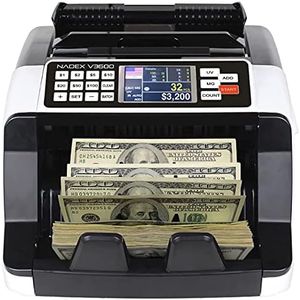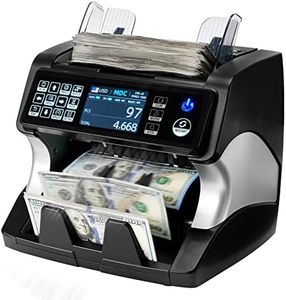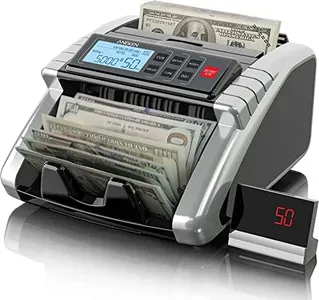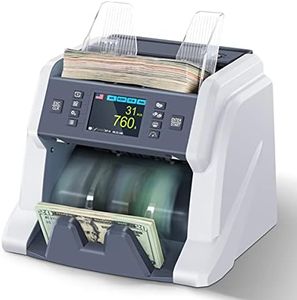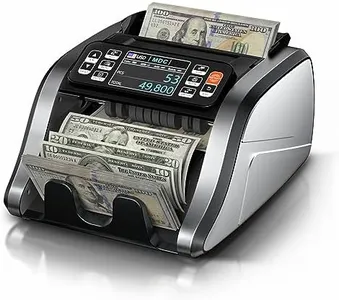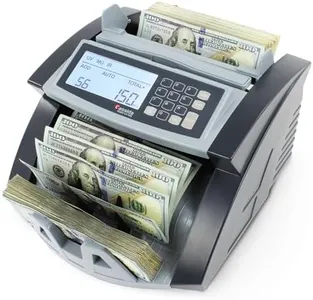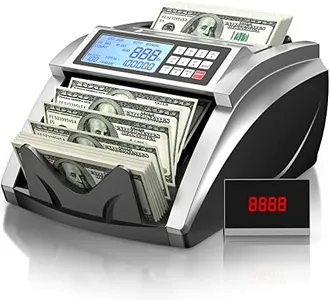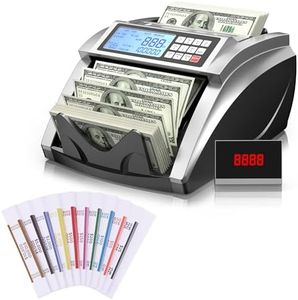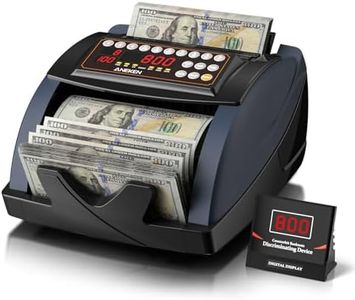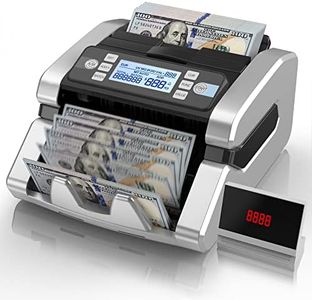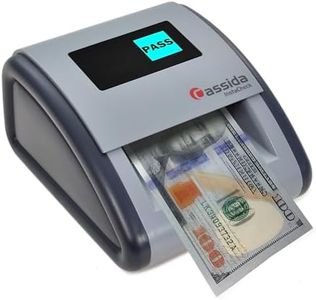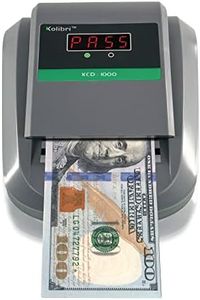We Use CookiesWe use cookies to enhance the security, performance,
functionality and for analytical and promotional activities. By continuing to browse this site you
are agreeing to our privacy policy
10 Best Counterfeit Detection Machines 2025 in the United States
How do we rank products for you?
Our technology thoroughly searches through the online shopping world, reviewing hundreds of sites. We then process and analyze this information, updating in real-time to bring you the latest top-rated products. This way, you always get the best and most current options available.

Buying Guide for the Best Counterfeit Detection Machines
When it comes to purchasing a counterfeit detection machine, it's essential to understand the key features and specifications that will ensure you get a reliable and efficient device. These machines are crucial for businesses that handle cash transactions, as they help in identifying fake currency and preventing financial losses. To make an informed decision, you need to consider various aspects such as detection methods, speed, compatibility, and ease of use. Here's a breakdown of the key specifications to look for and how to choose the best one for your needs.Detection MethodsDetection methods refer to the different technologies a machine uses to identify counterfeit currency. Common methods include ultraviolet (UV) detection, magnetic (MG) detection, infrared (IR) detection, and watermark detection. UV detection checks for the presence of UV features in the currency, MG detection looks for magnetic ink, IR detection examines the infrared properties, and watermark detection verifies the watermark patterns. It's important because different currencies have different security features, and a machine with multiple detection methods can provide more accurate results. If you handle various types of currency, opt for a machine with multiple detection methods. For single-currency use, a machine with the primary detection method for that currency might suffice.
Detection SpeedDetection speed indicates how quickly the machine can process and verify currency. This is usually measured in bills per minute. It's important because a higher speed can improve efficiency, especially in high-volume environments like retail stores or banks. Detection speeds can range from around 500 to over 1,500 bills per minute. For businesses with a high volume of cash transactions, a machine with a higher detection speed is beneficial. For smaller businesses or those with lower cash handling needs, a moderate speed may be sufficient.
Currency CompatibilityCurrency compatibility refers to the types of currency the machine can detect and verify. Some machines are designed to handle multiple currencies, while others are specific to a single currency. This is important because using a machine that is not compatible with the currency you handle can lead to inaccurate results. If your business deals with multiple currencies, choose a machine that supports all the currencies you need. For businesses dealing with only one type of currency, a machine specific to that currency will be more cost-effective and reliable.
Ease of UseEase of use encompasses the user interface, setup process, and overall user experience of the machine. A machine that is easy to use will have a clear display, simple controls, and straightforward instructions. This is important because it reduces the learning curve and minimizes the risk of user error. Look for machines with intuitive interfaces, clear instructions, and good customer support. If multiple employees will be using the machine, ensure it is user-friendly for all skill levels.
PortabilityPortability refers to the size and weight of the counterfeit detection machine. A portable machine is easy to move and can be used in different locations as needed. This is important for businesses that may need to verify currency in various settings, such as mobile vendors or event organizers. Portable machines are typically smaller and lighter, making them easy to transport. If you need a machine that can be used in multiple locations, choose a portable model. For stationary use, a larger, more robust machine may be more suitable.
Power SourceThe power source of a counterfeit detection machine can be either battery-operated, plug-in, or both. This is important because it affects where and how you can use the machine. Battery-operated machines offer flexibility and can be used in locations without access to power outlets, while plug-in machines provide continuous operation without the need for battery replacements. Some machines offer both options for added convenience. If you need to use the machine in various locations, a battery-operated or dual-power machine is ideal. For fixed locations with reliable power supply, a plug-in machine is sufficient.
Most Popular Categories Right Now
